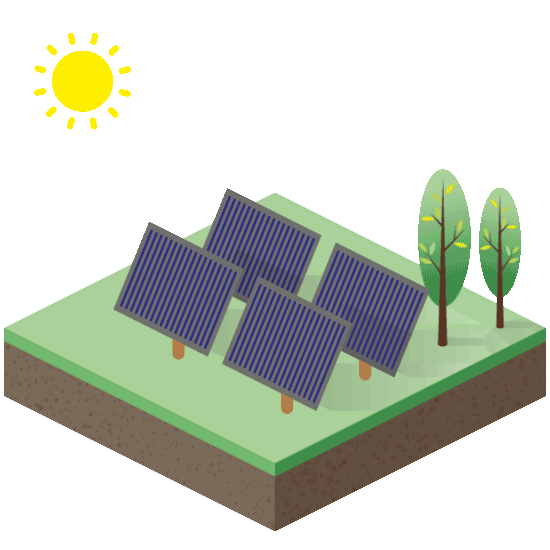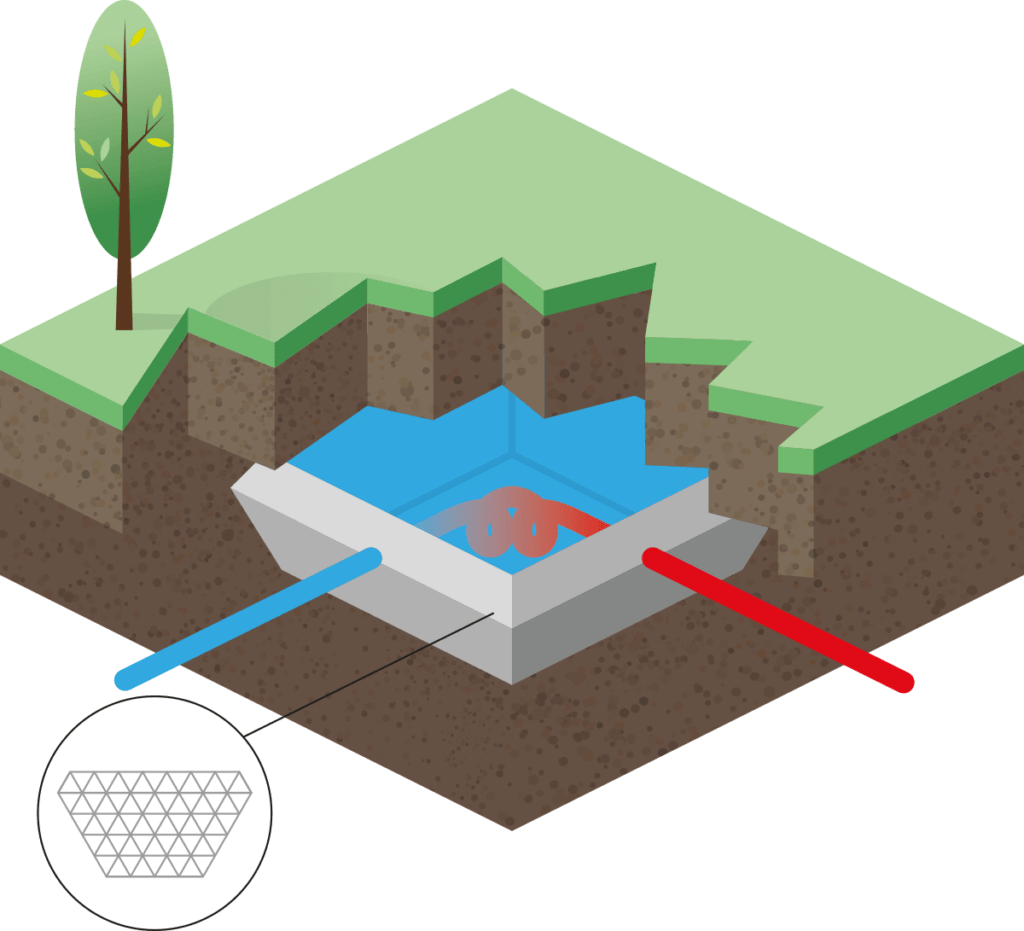Het systeem
Storage Energy from a renewable source is stored for use at a later time (on a daily or weekly basis for peak buffer and for use in winter for seasonal storage)
Sustainable energy source
Renewable heat sources can include solar and wind power generated with a heat pump, geothermal heat, ground energy, solar heat (collectors) or waste heat from businesses/factories/heat pumps.
Solar collectors With solar collectors, you create instant hot water on your roof, ready for immediate use or storage.
Solar panels
With the HoCoSto system for tap water, heating and cooling combined with solar panels on the roof for electricity, you are completely self-sufficient and energy-neutral.
Multiple use of space
The unique patented support structure allows utilization of the terrain on top of the storage. Think of a football cage, a playground or a car park.
Heat when needed
During peak demand on the grid (peak storage) or during winter (seasonal storage), the building or district is “passively” heated or cooled from the storage.


Sustainable energy source
Sustainable heat sources may include geothermal heat, ground energy, solar heat, waste heat from companies/factories and wind turbines.
Direct use of hot water from the solar collectors, especially in the summer months.
Solar panels
With the HoCoSto system for tap water and space heating, and solar panels on the roof for electricity, you are completely self-sufficient.

Seasonal storage
In the summer months, the water basin is heated by solar collectors or another renewable energy source.
Multiple use of space
The aluminium construction makes it possible to use the land on top of the buffer. Think of a football cage, a playground or a car park.

Heat when needed
In the winter months, the houses are heated by heat from the buffer.
Opslag in combinatie met HoCoSto energiemanagement
Om de opslag zo efficiënt mogelijk in te zetten ontwerpt HoCoSto indien gewenst ook het volledige duurzame warmtesysteem inclusief technische ruimte en energiemanagement. Vanaf de afleverset in de woning of binnen het gebouw neemt de lokale installateur het over. De duurzame warmte of koude wordt ingevoerd in de gebruikelijke gebouw- of woninginstallatie.
Het ontwerp van het warmtesysteem omvat op hoofdzaak de volgende componenten:
- Bron (of meerdere bronnen)
- Lokaal warmtenet (HT/MT of bronnet)
- Opslag (meerdere buffers/combinatie piek- en seizoensbuffer)
- Technische ruimte (met warmtepomp)
Energiemanagement is een belangrijk element in het duurzame warmtesysteem. De CO2 uitstoot wordt tot vrijwel nul gereduceerd door warmteopslag slim te combineren met energie uit PV panelen of groene elektriciteit als hulpenergie voor het systeem. Als het systeem draait op volledig duurzame hulpenergie voor de (warmte)pompen gaat de SCOP (seasonal coëfficiënt of performance) naar oneindig.
Het duurzame warmtesysteem wordt ontwikkeld in samenspraak met de opdrachtgever of het bouwteam van de opdrachtgever.
Bij het ontwerpen van een warmtesysteem zijn de warmtevraag en de warmtebalans leidend voor de dimensionering van het systeem en de warmteopslag. Daarom worden allereerst de uitgangspunten voor het systeem samen vastgesteld.